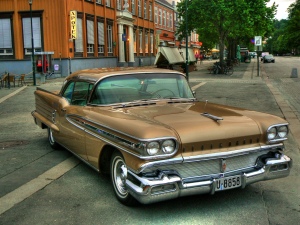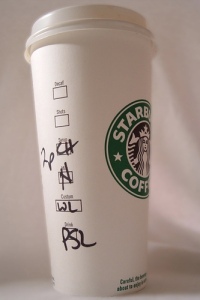Do you know someone in your life who is an excellent storyteller? Perhaps it’s a family member or good friend who has the ability to have you hooked on their every word. They can bring about emotion, laughter and intrigue just from their own presence and voice. This is the type of person that big brands want to emulate. The companies of the world want to have you enthralled by their words, their imagery and their insights. They want to make you feel raw emotion and tell you a tale that will change your perspective on the day or even on life itself. Many brands are successful at creating this sense of feeling, but some unfortunately fail to communicate their stories properly.
Skype Makes The Impossible Happen With Tearjerker Ad Spot
Skype is a beautiful example of a brand that has won at telling stories to consumers for years now. The live video chatting tool stretches beyond being an easy means of conferencing in the boardroom. It even goes farther than saying ‘happy birthday’ to Grandma who lives across the country in Florida.

Skype wanted to tell a story that crosses the globe, and exemplifies the true meaning of family, and they succeeded.
The “Stay Together” campaign actually shows how digital platforms are changing what it means to come together. The 2 minute spot tells the story of Solomon, a Ugandan man who came to America with the clothes on his back and only 5 dollars in his pocket. Leaving his family behind, Solomon uses Skype to connect with relatives and his young son from thousands of miles away. The masterful campaign contrasts America and Uganda with stunning imagery, and concludes with an emotional gift for Solomon. A photographer takes a photo of Solomon’s family on Skype being projected onto his living room wall, while Solomon stands beside them. This ‘Impossible Family Portrait’ is the first of it’s kind and a unique testament to the power of the video tool.
This type of storytelling let’s the product speak for itself. It does not push the value of Skype on the consumer, but rather opens their eyes to the possibilities it presents. There is no call-to-action, no deal offered, no salesperson asking you to buy. Simply Solomon’s tears as he sees the official printout of his first ever family portrait and hangs it on his bare bedroom wall says enough about why Skype is so essential and meaningful to people. The company also projects the sense that it cares about the lives of it’s users and the journeys they undergo.
How does this Skype campaign resonate with you? Are the imagery and story enough to take the viewer from perception to purchase?
“Not Your Father’s Oldmobile” – A Cautionary Tale
The story of how General Motors lost it’s way with their model, The Oldsmobile, is a classic tale of a reinvention that went terribly wrong. (Rarely do brand-reinventions go right, mind you).

General Motors banked itself as an all American, slice- of-apple-pie kind of brand back in the 1960s. It produced cars that were not only burly, but very innovative for their time. GM was always on the cutting edge of design and technology, along with being trusted for their craftsmanship and quality. Their tagline was, “Escape From The Ordinary”. But come the 1980s, that’s just what they did…
With the emerging popularity of Asian car manufacturers and changes to the standard look and feel of a motor vehicle, the late 80s and early 90s was a hit or miss for American car companies. Faced with an adapt or flee kind of circumstance, GM tried its hand at adapting the Oldsmobile. In an attempt to be ‘hip’, the brand developed a whole new story for the trusty vehicle, which was now being favoured by a much older demographic. They released a commercial featuring Ringo Starr and his daughter that was jam-packed with early 90s cheese-ball production value. “Not Your Father’s Oldsmobile” was the new tagline, in hopes of attracting young drivers by rebranding their dad’s dated old set of wheels and making it look desirable again. It went against their original automotive values and tried to rewrite what it was all about to appeal to this new generation of drivers it had little understanding of.
The campaign went against what the brand originally stood for, and cheesed off the loyal customers. It was a certified nail in the coffin for the Oldsmobile, which shut down production a few years later. The key takeaways from this brand storytelling fail are: 1) do not betray what your brand stands, 2) let your brand die with dignity vs. trying to grasp at straws to be something you’re not.
What could GM have done differently to save the Oldsmobile, or was it on it’s way to anyways?
How Starbucks Made Fun Of Their Customers, And Won The Internet

The Pumpkin Spice Latte is a yearly tradition for Starbucks lovers and even non-Starbie regulars alike. It became such a craze upon it’s release years ago that it has almost become a modern cultural staple in the Western world. The coffee giant recognized their customers pent up excitement for the PSL’s release date each year, their obsession with Instagramming and Facebooking their beverages and the inherent mocking of people (particularly women) who love PSLs. Starbucks decided to poke some fun at this cult flavour following with a clever ad spot.
The story revolves around a made-up town which celebrates the coming of the PSL every year with an annual festival. There is cinnamon stick baton twirling and pumpkin-inspired hair colouring. The spot is beautifully shot in a real-life documentary style that could easily pass as a TLC network reality show you may have the fortune of binge-watching on a Saturday afternoon after Say Yes To The Dress.
The narrative connects to the audience in a way that gently jokes about the PSL phenomenon, and creates a heartfelt depiction of this endearing and relatable small town. It opens up an interaction between brand and customer, a sort of nod from Starbucks that they understand what is happening with this product. It also gives the brand room to expand upon these characters and this fictional town.
Is this type of storytelling creating the right engagement with customers? Where could Starbucks take their narrative next?
Share examples of your favourite brand stories, or ones that have failed miserably in front of the eyes of consumers.

Great post 🙂
Yes! I definitely think that this type of storytelling is creating the right engagement with customers. It gives them to chance to connect with a brand, while the brand subtly gets their point across.
I could see Starbucks creating a whole “basic” series, that would be hilarious.. Am I right? But my all time favourite brand story is “The Scarecrow” by Chipotle.
I loved the first video!!! I felt every identified :(. I agree with you when you state that Skype is not pushing its value on the consumer which in my opinion is very important when a brand wants to tell a story, as consumers we hate it when they are pushing the company’s value, and I think that is also why the second “brand story” you mention was not successful either.
I think when a brand tells a story it is very important they are authentic and as you said “don’t betray what the brand stands for.” And about Starbucks, I didn’t quite understand the story (maybe because I’m not very into PSL and Starbucks), but I do think it was a valid brand story, they had fun making fun of their customers but always keeping that fine line of respect which probably ended up making Starbucks’ fans proud of their love for the brand.
The last thing I’ll mention is that I liked the beginning when you stated the importance of brands resembling a person which in my opinion is one of the most important traits of a brand storyteller.
Overall I think you did a very good job on your post 😀 I didn’t get bored while reading it (I swear)
I loved the first video!!! I felt every identified :(. I agree with you when you state that Skype is not pushing its value on the consumer which in my opinion is very important when a brand wants to tell a story, as consumers we hate it when they are pushing the company’s value, and I think that is also why the second “brand story” you mention was not successful either.
I think when a brand tells a story it is very important they are authentic and as you said “don’t betray what the brand stands for.” And about Starbucks, I didn’t quite understand the story (maybe because I’m not very into PSL and Starbucks), but I do think it was a valid brand story, they had fun making fun of their customers but always keeping that fine line of respect which probably ended up making Starbucks’ fans proud of their love for the brand.
The last thing I’ll mention is that I liked the beginning when you stated the importance of brands resembling a person which in my opinion is one of the most important traits of a brand storyteller.
Overall I think you did a very good job on your post 😀 I didn’t get bored while reading it (I swear)